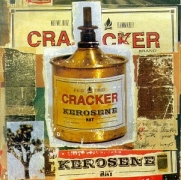Kerosene Hat
| Kerosene Hat | ||||
|---|---|---|---|---|
 |
||||
| Studio album by Cracker | ||||
| Released | August 24, 1993 | |||
| Recorded | March 25, 1993 | |||
| Genre | Alternative rock, alternative country | |||
| Length | 72:43 | |||
| Label | Virgin | |||
| Producer | Don Smith, Cracker | |||
| Cracker chronology | ||||
|
||||
| Professional ratings | |
|---|---|
| Review scores | |
| Source | Rating |
| Allmusic |
|
Kerosene Hat is the second studio album by American rock band Cracker, released on August 24, 1993. It reached #1 on Billboard's Top Heatseekers chart, and #59 on the Billboard 200 album chart. The well-known hit single from this album, "Low", helped Cracker gain widespread notice.
According to frontman David Lowery, the album's title comes from the band's early days in Richmond, Virginia. Lowery lived with Cracker guitarist Johnny Hickman in an old dilapidated house whose only source of heat came from two kerosene heaters. To buy more kerosene meant a cold walk to a nearby gas station, so before leaving the house, Lowery would bundle up and put on an old wool hunting cap – his "kerosene hat". "To this day," says Lowery, "the smell of kerosene reminds me of the poverty and the wistful hope we had for our music."
Following the release of their debut album – which went gold – Cracker entered the studio in 1992 intending to record their next album completely live to tape. This idea was eventually scrapped, but four live-in-the-studio tracks were released later that same year as the Tucson EP.
Seeking a new recording location away from the distractions of Los Angeles and their record company, the band scouted out a few sites, including a Palm Springs house that once belonged to Frank Sinatra. Eventually they happened upon a derelict soundstage in Pioneertown, California, which was part of an old movie set once used to shoot Western films and TV shows.
As Johnny Hickman recalls: "It really wasn't that much of a sound stage. It was more of a barn. There were holes in the wall you could see through and it was just a huge, huge barn basically. But it was just big enough to open the doors and drive a mobile recording truck into. So we got all of our equipment and the truck into the barn and shut the door and for the next six weeks proceeded to make Kerosene Hat."
...
Wikipedia
